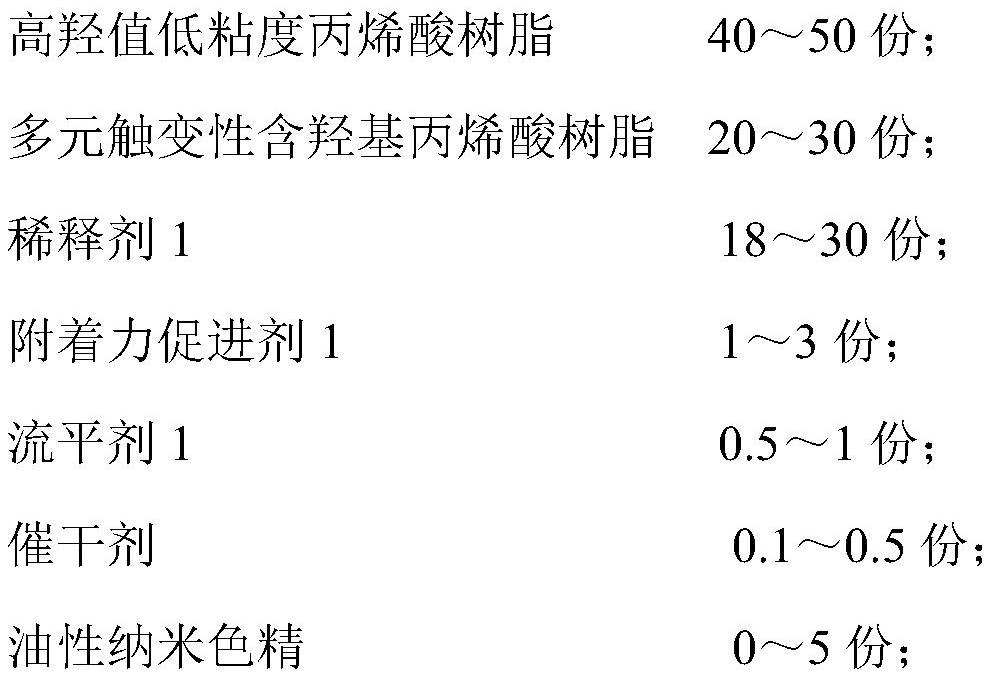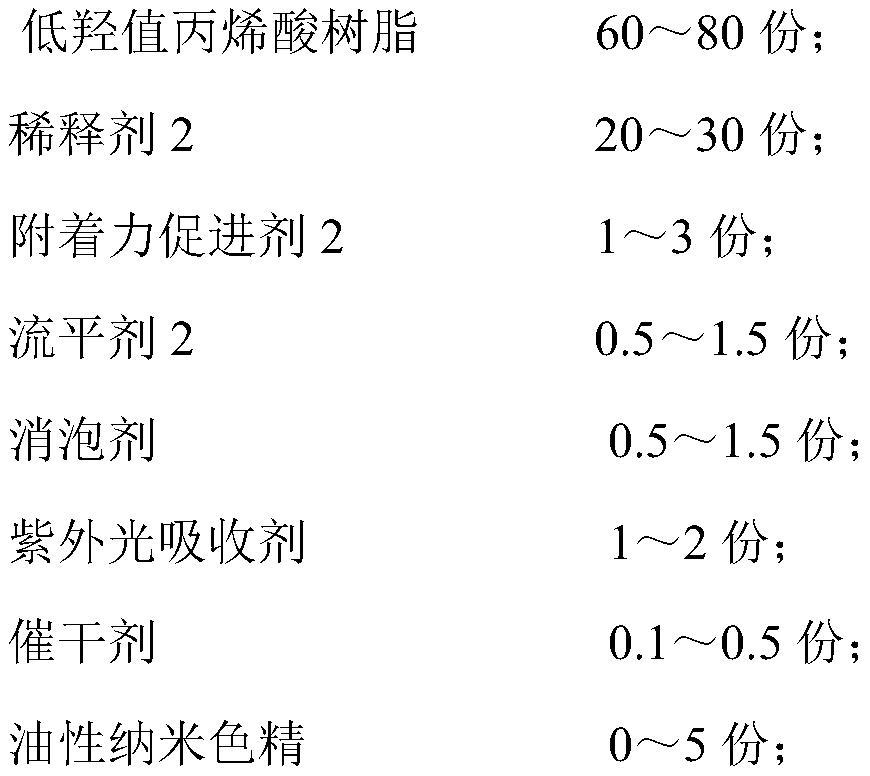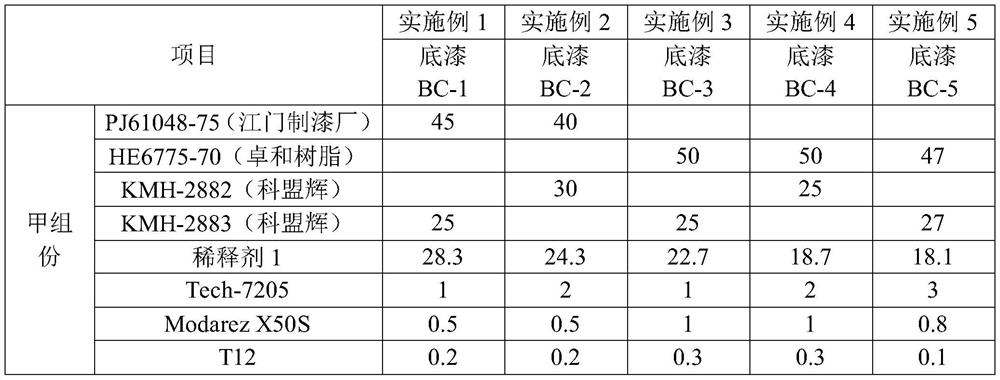Acrylic vacuum coating paint and coating process thereof
A vacuum coating and acrylic technology, applied in polyurea/polyurethane coatings, devices for coating liquids on the surface, coatings, etc., can solve the problems of lack of weather resistance, general performance of thermoplastic coatings, and poor weather resistance.
- Summary
- Abstract
- Description
- Claims
- Application Information
AI Technical Summary
Problems solved by technology
Method used
Image
Examples
Embodiment 1 to 5
[0059] An acrylic vacuum coating paint, comprising a vacuum coating primer and a vacuum coating topcoat, wherein the formulation of the primer is shown in Table 1, and the formulation of the topcoat is shown in Table 2. Wherein, diluent 1 is a mixture of toluene, xylene, ethyl acetate, butyl acetate, cyclohexanone, and ethylene glycol butyl ether, and the mass ratios are 5:20:5:20:15:5, respectively. Diluent 2 is a mixture of toluene, xylene, ethyl acetate, butyl acetate, propylene glycol acetate, and diisobutyl ketone, with a mass ratio of 5:20:5:15:15:10, respectively.
[0060] Table 1
[0061]
[0062]
[0063] Table 2
[0064]
[0065] The coating process steps of acrylic vacuum coating coating are as follows:
[0066] (1) Clean the acrylic substrate before painting, then add the component A of the vacuum coating primer into the dispersion kettle according to the ratio shown in Table 1, stir at 600-800rpm until uniform, and then add the component A of the vacuum...
PUM
 Login to View More
Login to View More Abstract
Description
Claims
Application Information
 Login to View More
Login to View More - R&D
- Intellectual Property
- Life Sciences
- Materials
- Tech Scout
- Unparalleled Data Quality
- Higher Quality Content
- 60% Fewer Hallucinations
Browse by: Latest US Patents, China's latest patents, Technical Efficacy Thesaurus, Application Domain, Technology Topic, Popular Technical Reports.
© 2025 PatSnap. All rights reserved.Legal|Privacy policy|Modern Slavery Act Transparency Statement|Sitemap|About US| Contact US: help@patsnap.com



